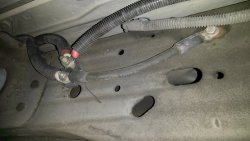enoniam
Full Member
- Joined
- Nov 30, 2012
- Messages
- 2,860
redheadedrod said:Amps are amps, but volts are volts and volts*amps = wattage or power.
It DOES make a difference...
The actual total power/wattage is what the wire is rated for which is the volts*amps.
Without taking into account the resistances/capacitance etc you SHOULD be pretty close by looking at the radio of the rated voltage and what you want to use.
Thus a wire rated for 20 amps at 120 volts SHOULD work at 200 amps at 12 volts.
Due to factors such as resistance of the wire and capacitance though you really should look at 12 volt rated wire for proper power capacity. 120 volt rated wire may NOT quite carry 10x the amperage at 12 volts.
Unless they changed how they rate wiring in the 30 years since I went to tech school... I could be getting "old" too I suppose but this is the way I remember it..
Rodney
As an electrical engineer I advise all to NOT follow the above advice. Voltage rating applies to the insulator material around the current carrying core. Current rating applies to the core. They are not a tradeoff.







